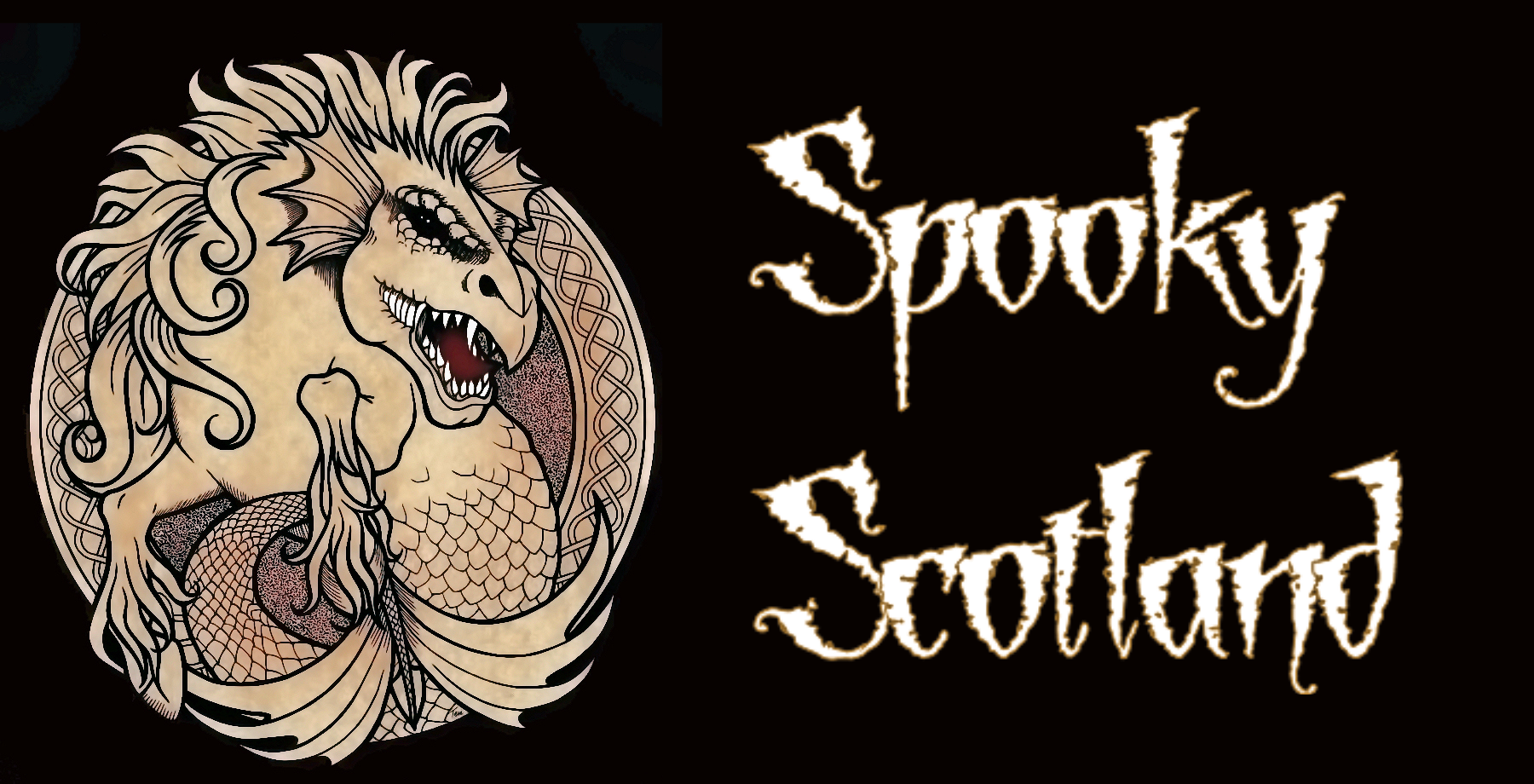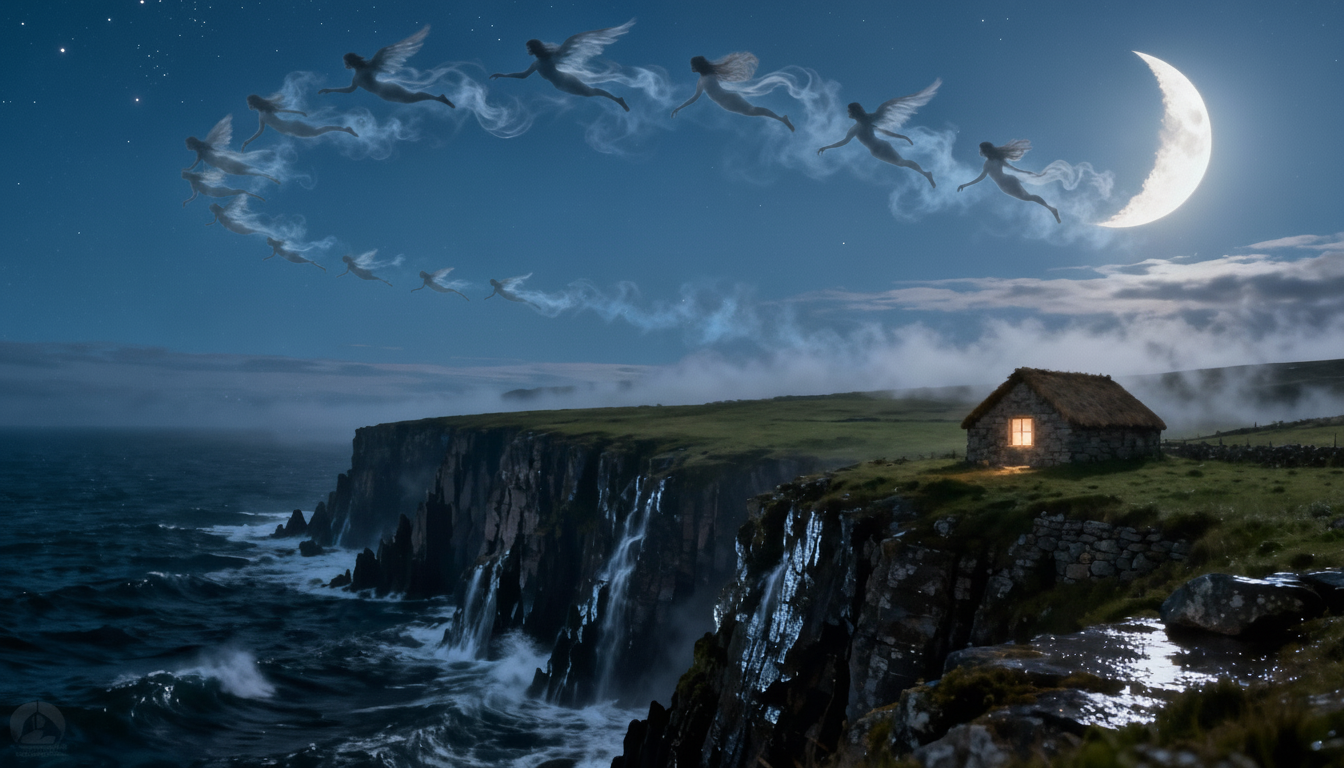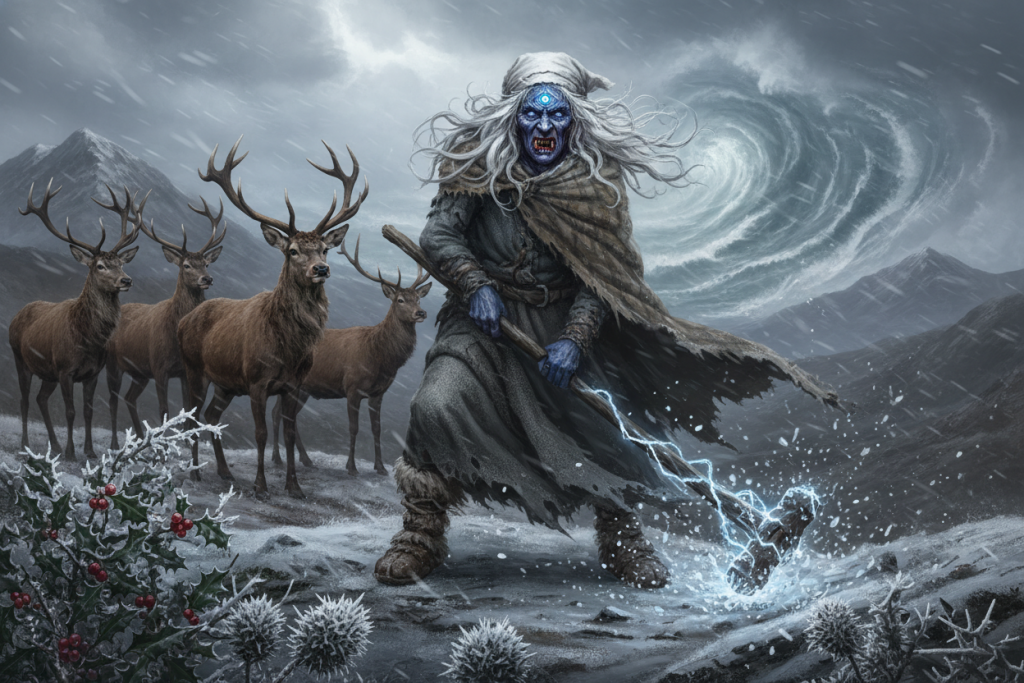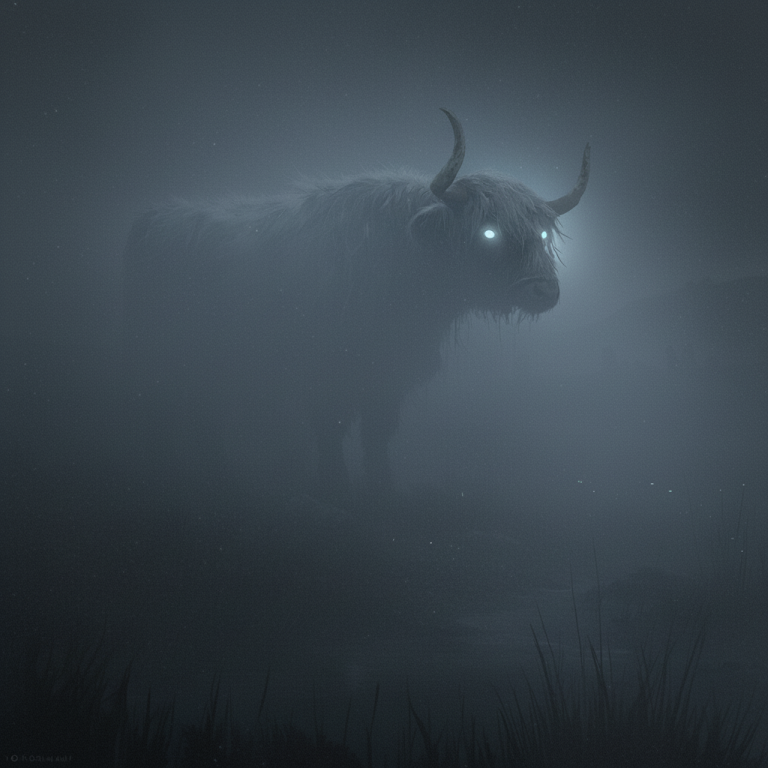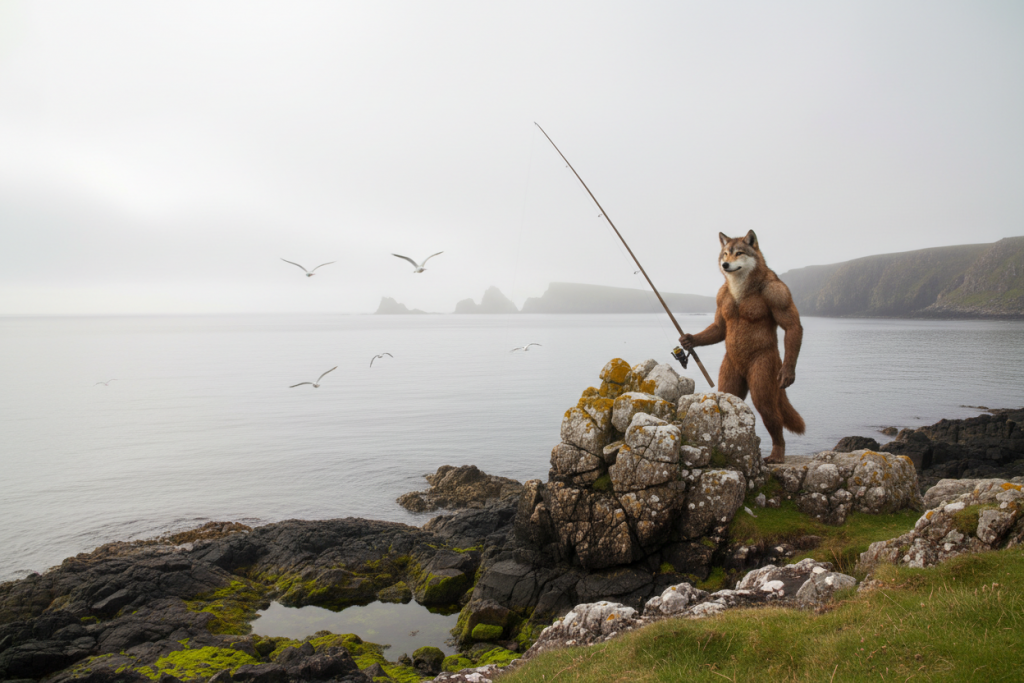Name pronunciation:
Scottish Gaelic: “SLOO-uh(g)”
General Information:
The Sluagh, or “host of the dead,” are a flock of malevolent spirits found in Scottish and Irish folklore. Many in the Hebrides feared the Sluagh, which some called fallen angels and others knew as the unforgiven dead. They move across the night sky in a crescent, sweeping down to seize mortals and carry them far over sea and land. At times, they were said to help those stranded on cliffs, yet most tales paint them as perilous. The name comes from Old Irish “slúag,” meaning host, army, or crowd. Writers like Lewis Spence describe them as a fairy host of the dead, linking the Sluagh to Hallowe’en and older rites of the departed.
Appearance:
The Sluagh appear as a great, wheeling cloud, like a murmuration of grey shapes rather than a line of distinct bodies. They move as one, turning and folding like starlings in the dusk, yet the forms seem human at the edges—half-seen faces, long limbs, and smoke-like tails that fade into the dark. People speak of a rush of air and a soft murmur as they pass. Sometimes the flock looks almost like birds. At other times, the figures feel closer to ghostly, wingless faeries, their outlines thinning to mist.
Habitat:
They favour the Western Isles and the Hebrides, ranging over sea lochs, cliffs, moorland, and crofting routes between islands. Stories place them on windswept headlands and along paths where the sea spray rises. They are also said to return to the scenes of their earthly wrongs, which is why people kept west-facing windows shut at night. People were especially careful around Hallowe’en, and stayed indoors when the wind turned strange.
Behaviour:
The Sluagh travel in a crescent and can approach from any direction, which makes them hard to escape. They are known to lift a person without warning and carry them far away and even between islands. Some say they will drop their captives from a height or draw them into the earth. Now and then, they rescue those stranded on rock clefts, but most accounts warn that they are dangerous to the living. Many believe they revisit places tied to past sins, roaming the night in search of what they lost.
Shape-shifting Ability:
They do not take a single, fixed human form. Instead, their shape-shift lies in the flock itself: thinning and thickening as it moves, the figures stretching like smoke, then gathering into a denser mass. At a distance, they resemble a flight of birds. Up close, they look like wan, wingless spirits whose limbs taper into mist.
Variant:
- Sluagh na marbh: “Host of the dead,” the common Scottish Gaelic name.
- Fairy host: In some lore, they sit within the fairy realm rather than the ghostly.
- Fallen angels: Another tradition claims they are angels who fell but did not descend into Hell.
These threads overlap, and together they form the Sluagh—restless, airborne, and uneasy among the living.
Location in Scotland:
- Western Isles and Hebrides (core range)
- Sea cliffs, coastal paths, and moorland tracks
- Island routes between crofting communities
- Sites linked to older sins or tragedies
Stories/ Sightings or Experiences:
The Doctor’s Two Patients (after John Gregorson Campbell)
A man walked with a friend who said he spoke with the fairies and that they were coming for him. He was calm—eager, even—to go with them. As they went on, the Sluagh swept down, seized him, and carried him off. He was found two miles away, dropped by the host. When the first man told the doctor what had happened, the doctor answered that he had just attended the same friend, who had given the very same account. Two matching reports, from two people, convinced many that the Sluagh had indeed taken him.
The Starlings in the Night (after Alexander Carmichael)
A witness told Alexander Carmichael that the Sluagh flew “in great clouds,” moving up and down the face of the world like starlings. They returned, the witness said, to the scenes of their earthly transgressions. On such nights, doors were barred and lamps were dimmed, for if illness or misadventure followed by morning, people would blame the Sluagh that had passed overhead.
The Crescent Flight (after Lewis Spence)
Lewis Spence wrote that, in the Western Isles, the Sluagh were seen as a fairy host of the dead and that Hallowe’en’s feast of the dead was the fairies’ festival as well. Islanders watched the sky for the crescent arc. Some said the Sluagh could lift a stranded climber from a cliff face, while others swore they would lift a healthy person and carry them over the sea, only to set them down on another island at dawn.
Purpose of the myth or Legend:
The Sluagh help people make sense of sudden loss, strange winds, and fear in the dark hours, while also warning against pride and lingering wrongs. Because they return to places of old transgression, they stand as a moral lesson as much as a haunting.
